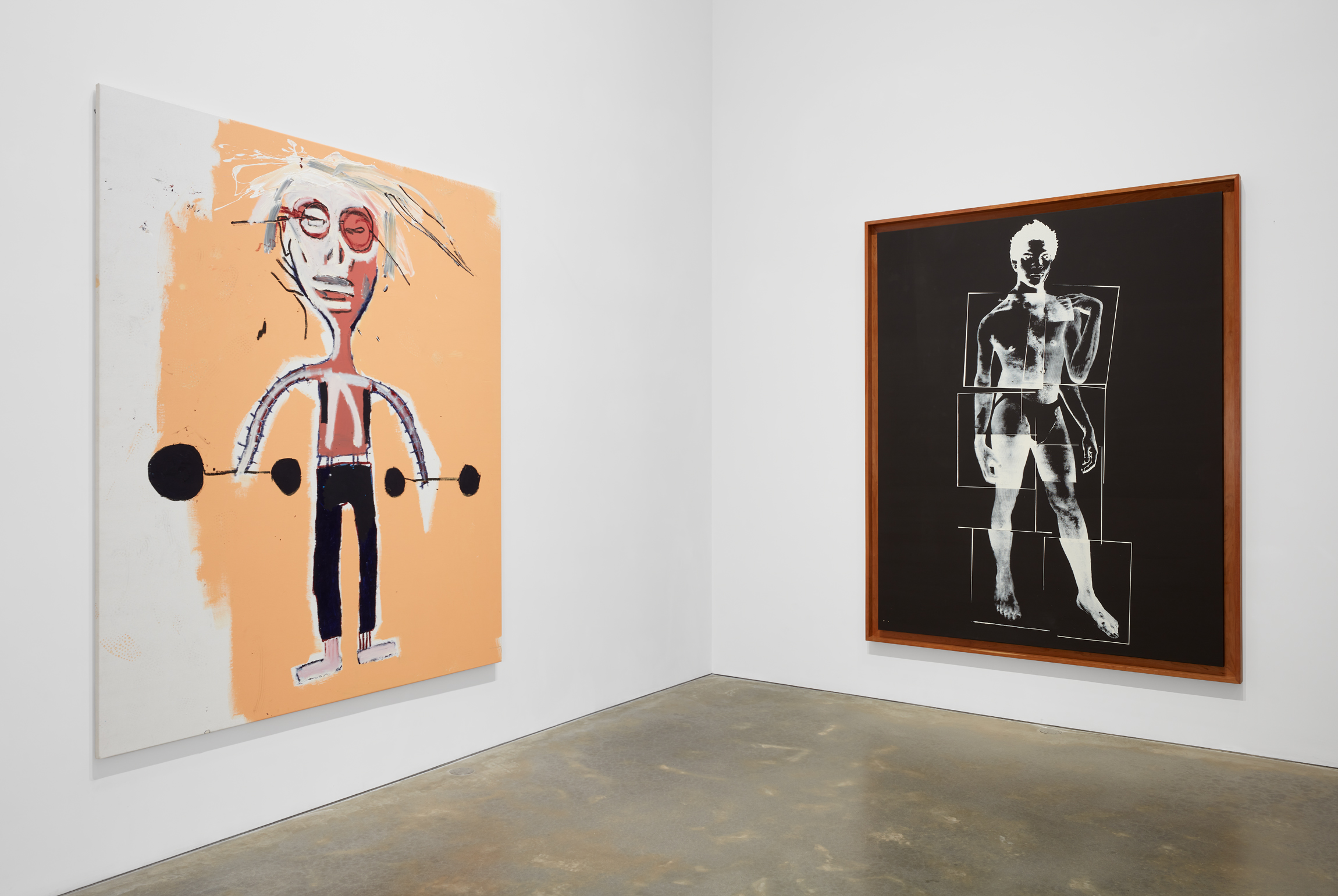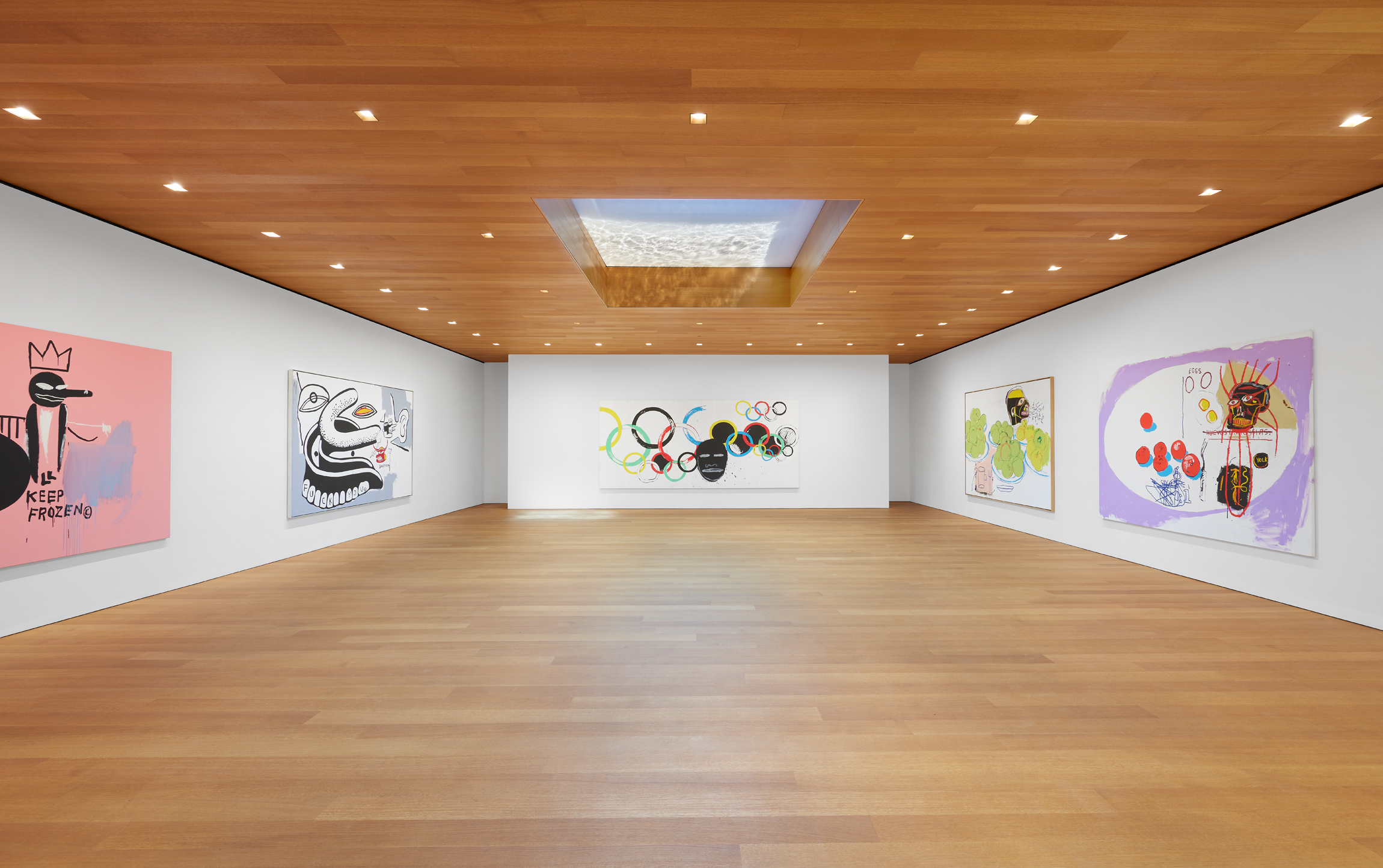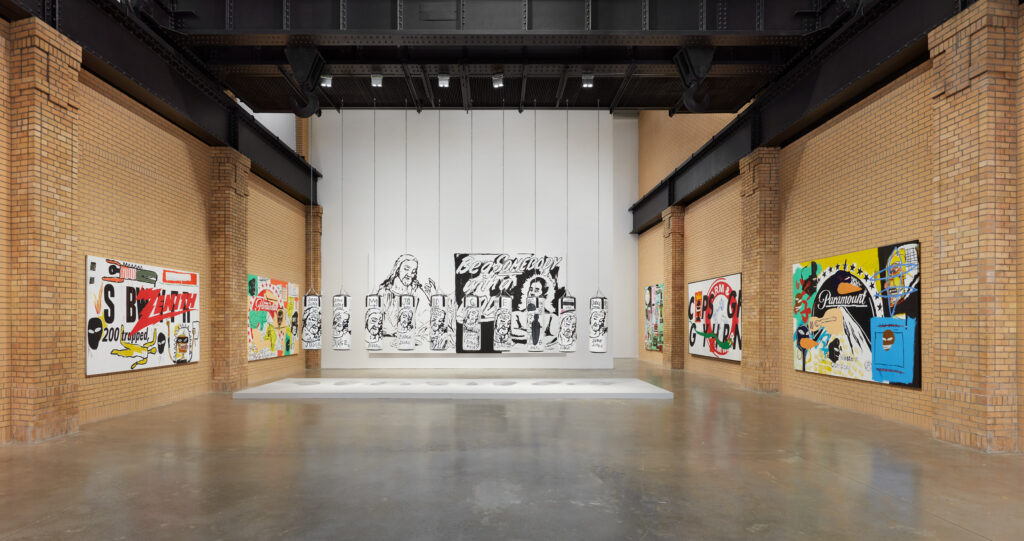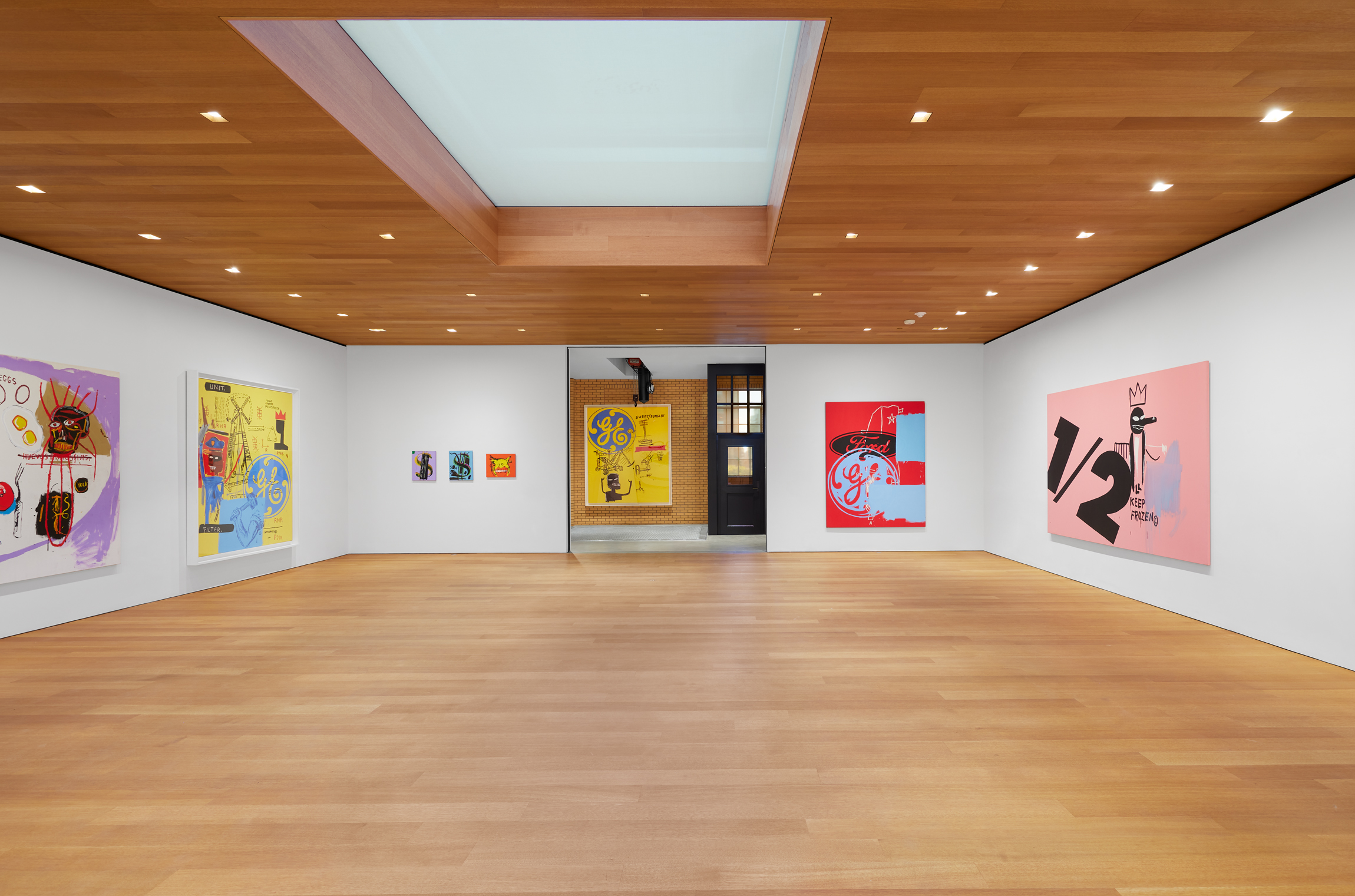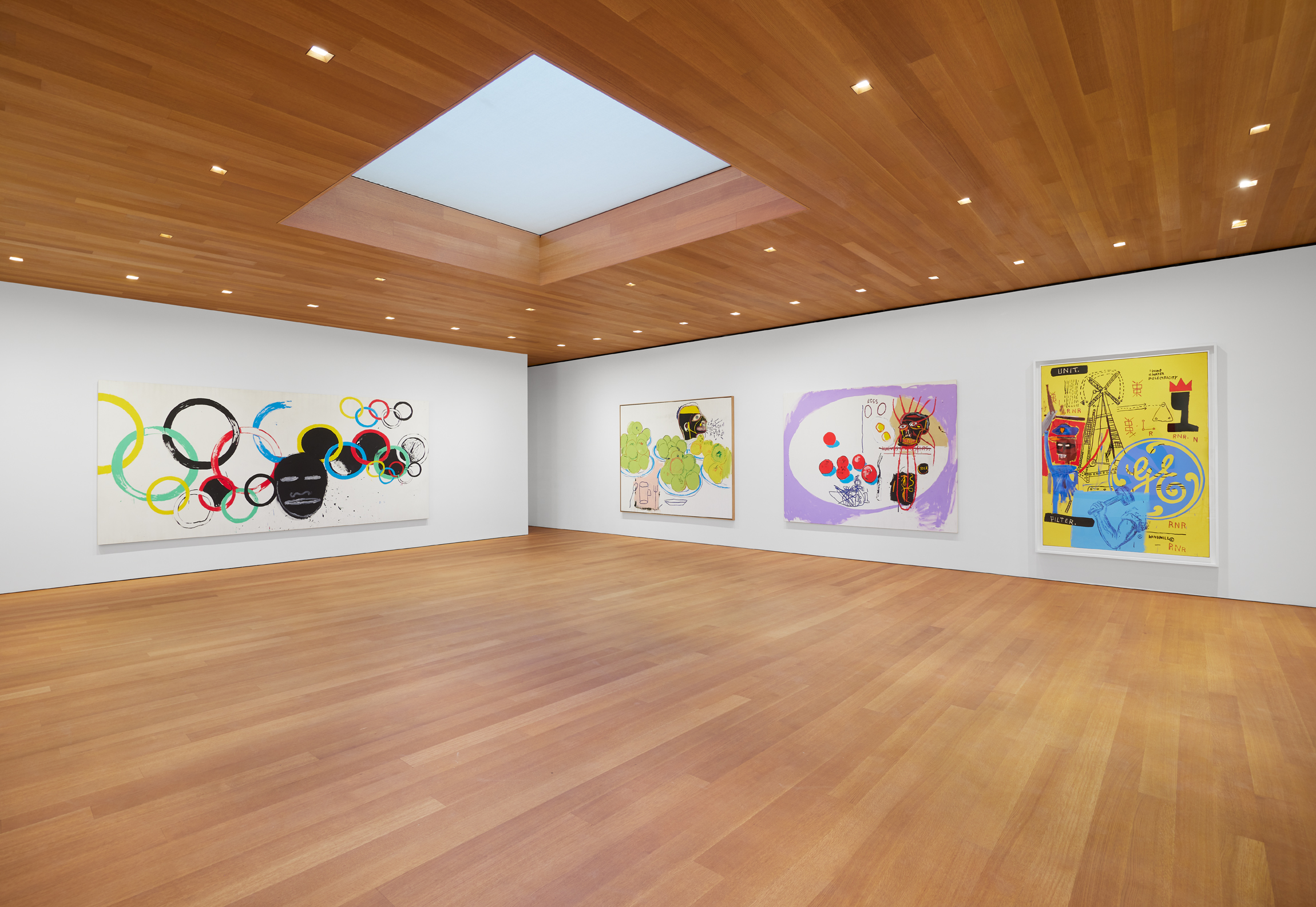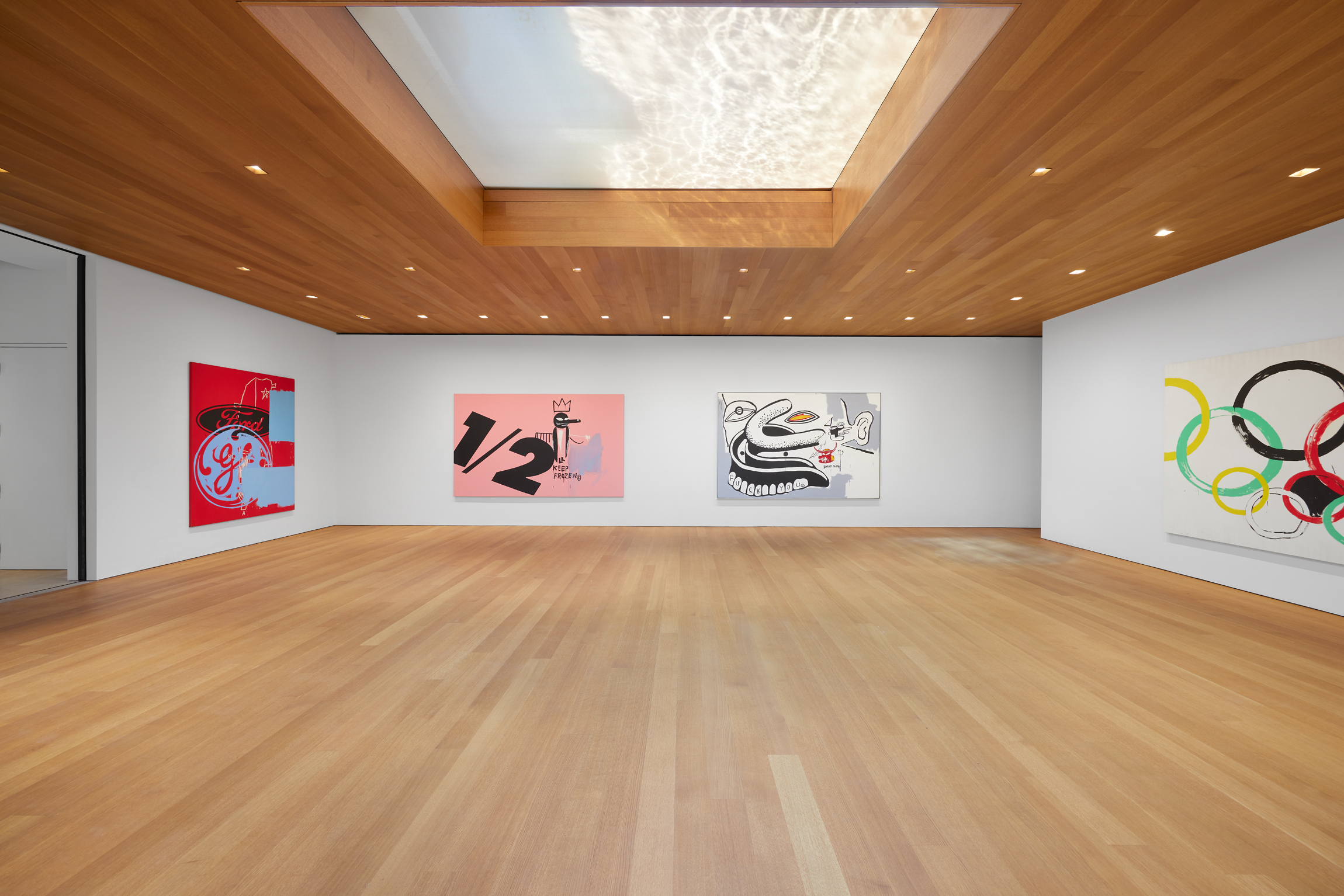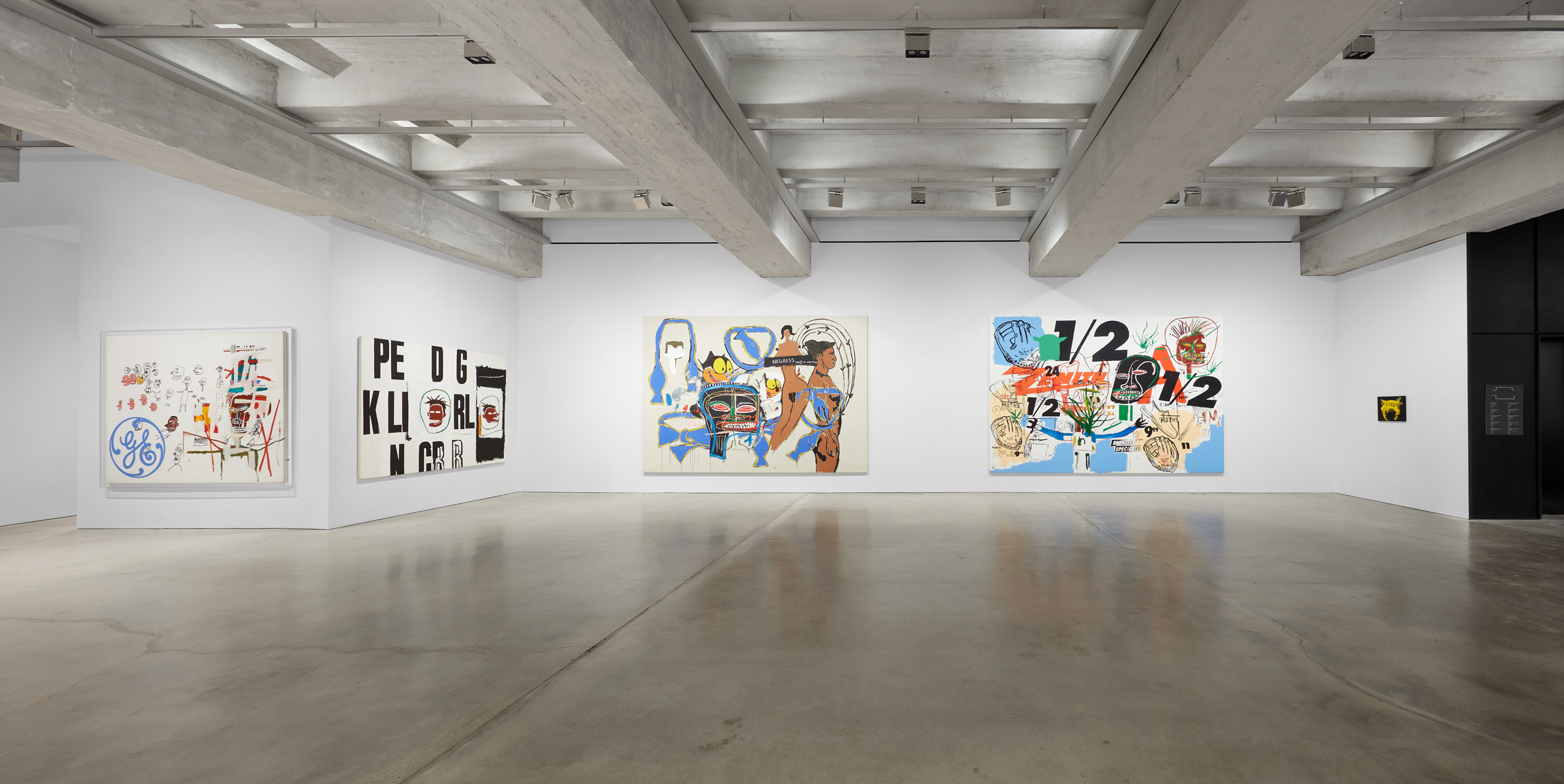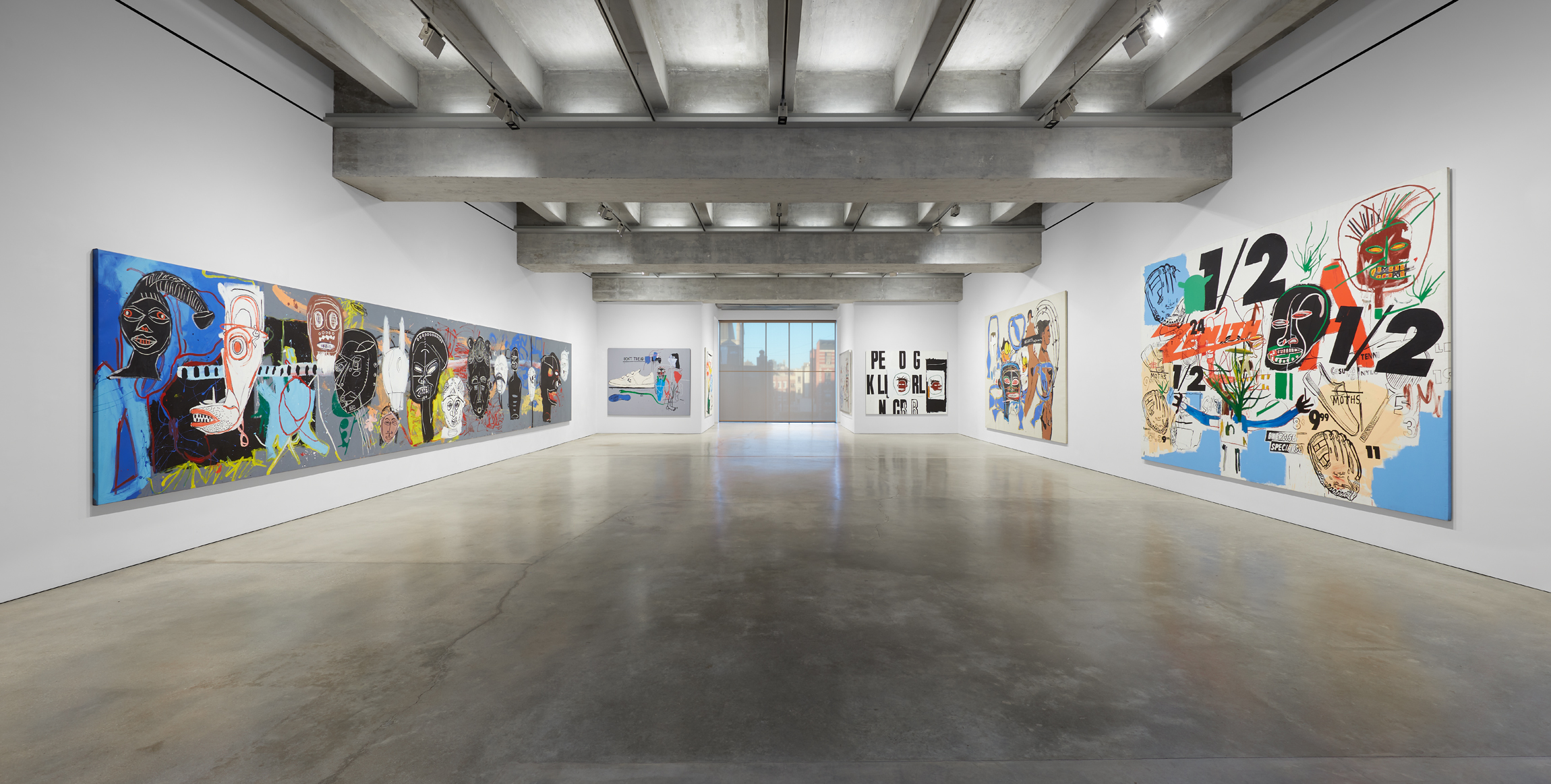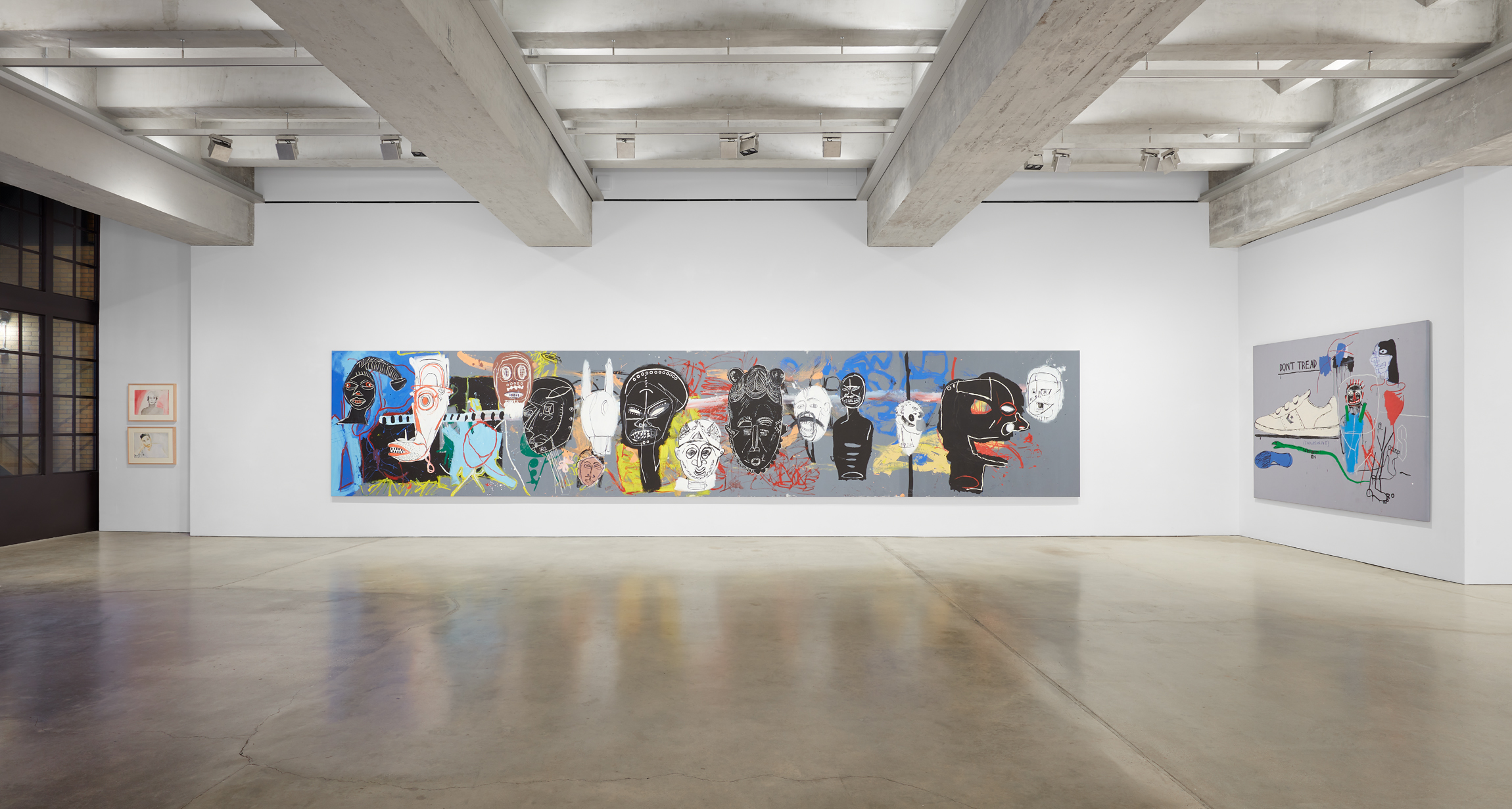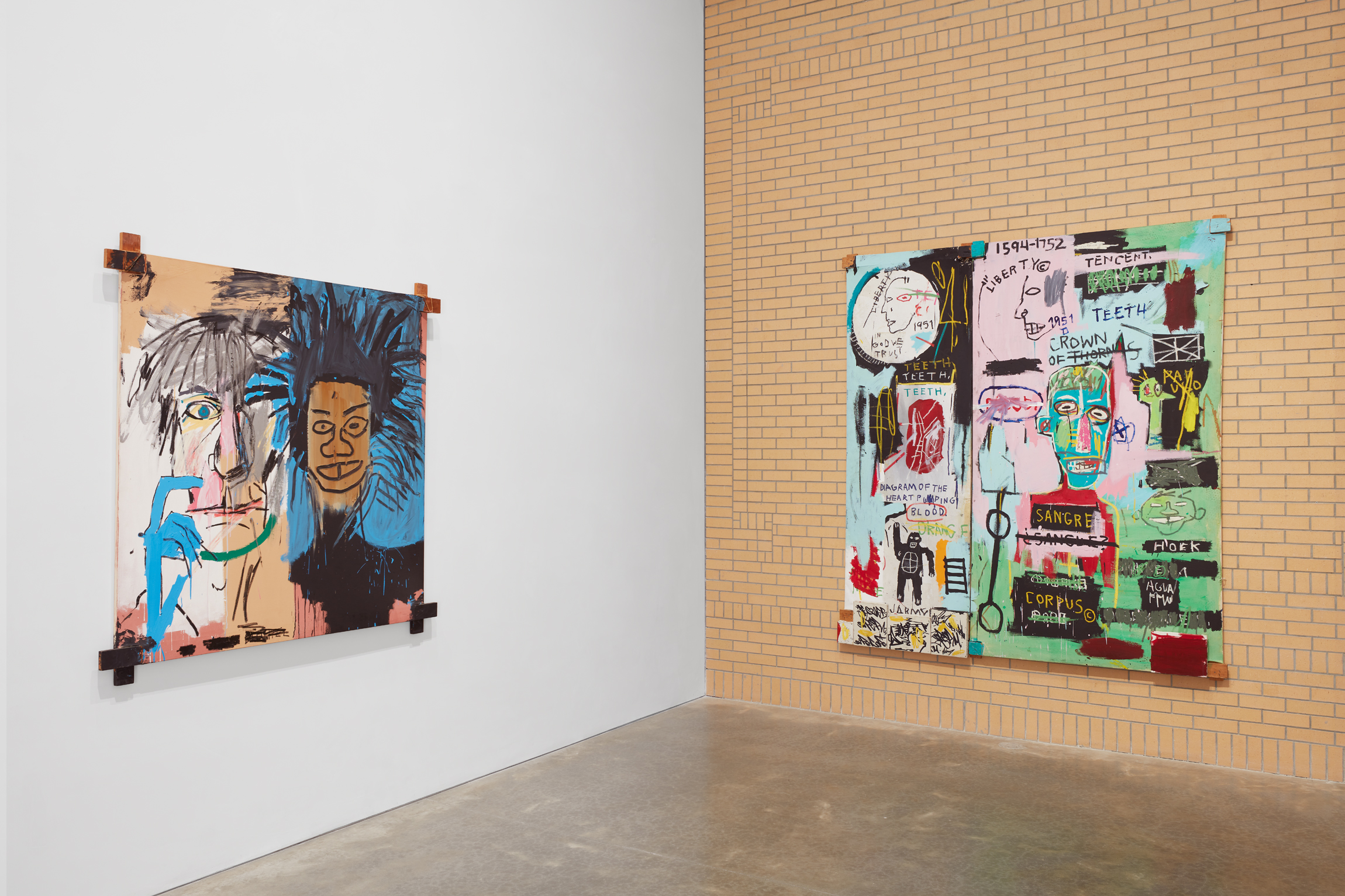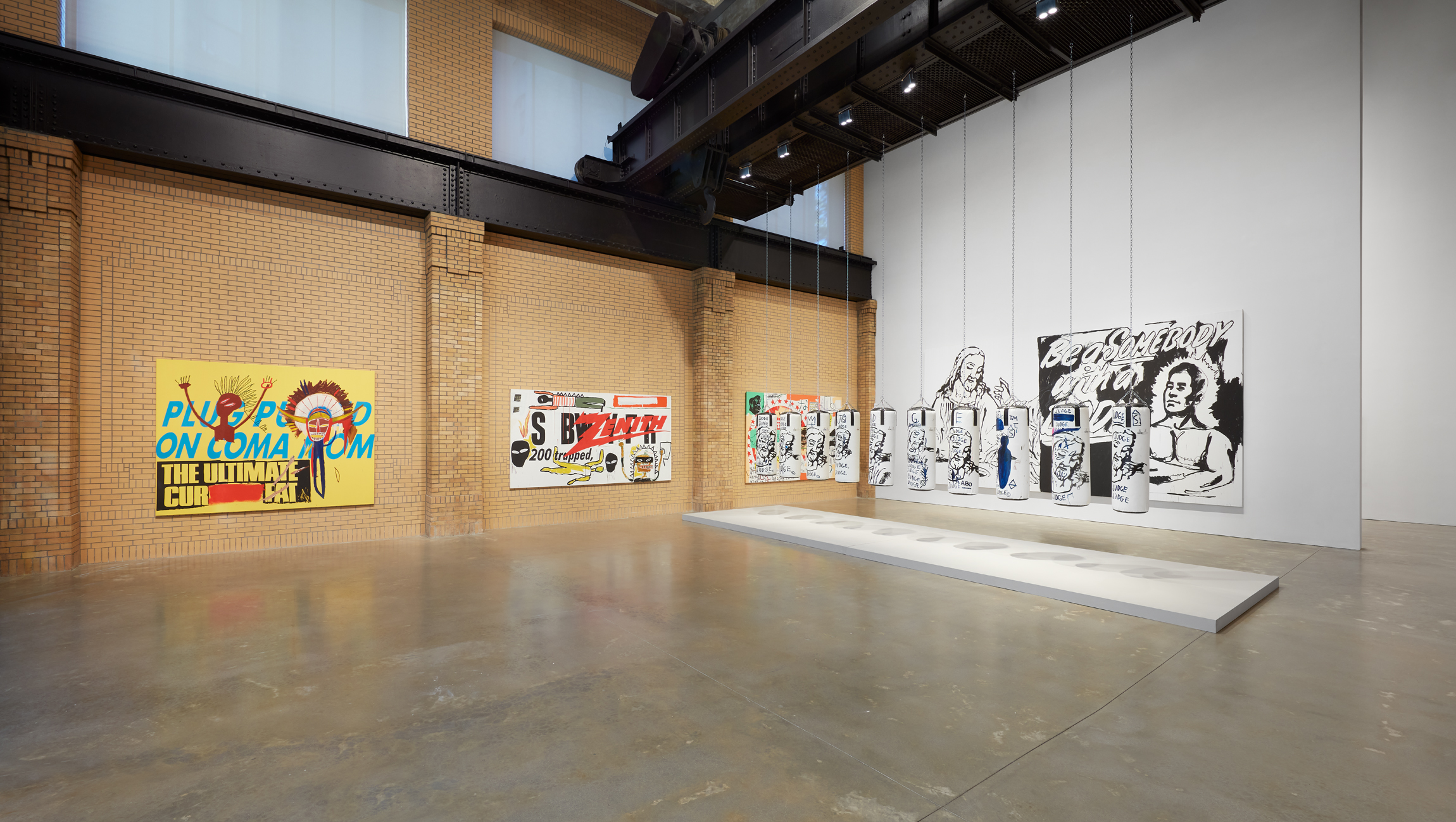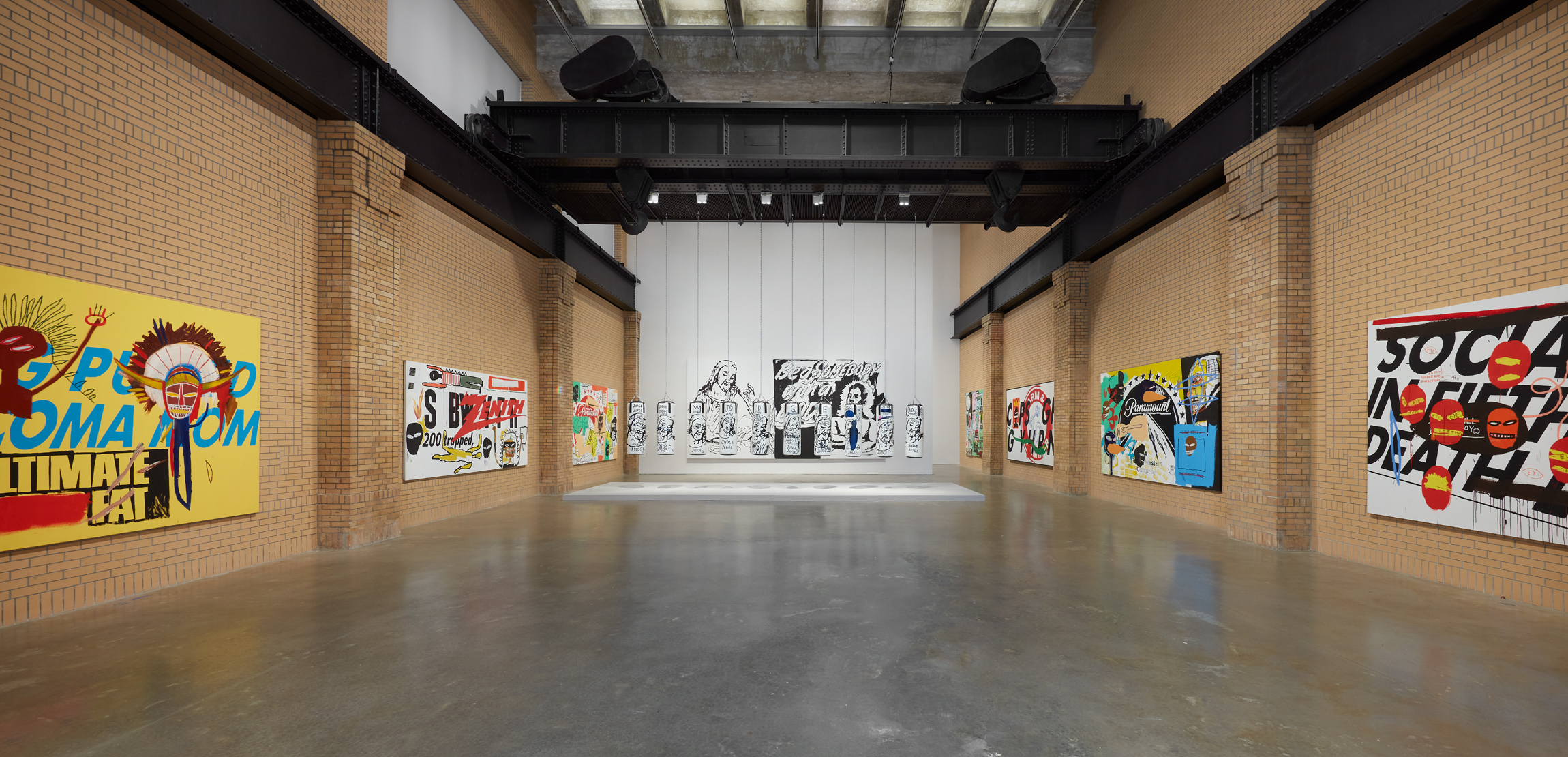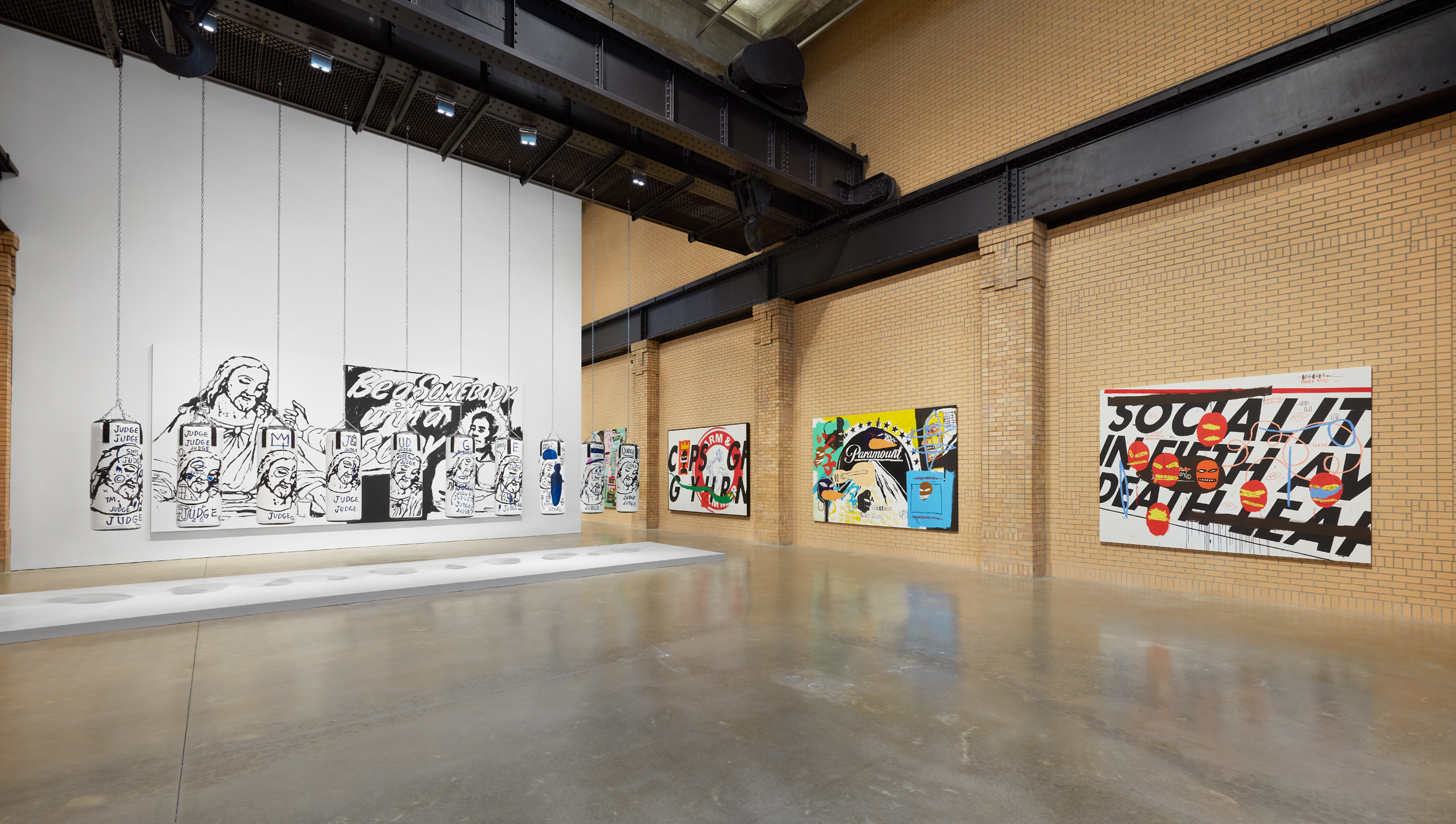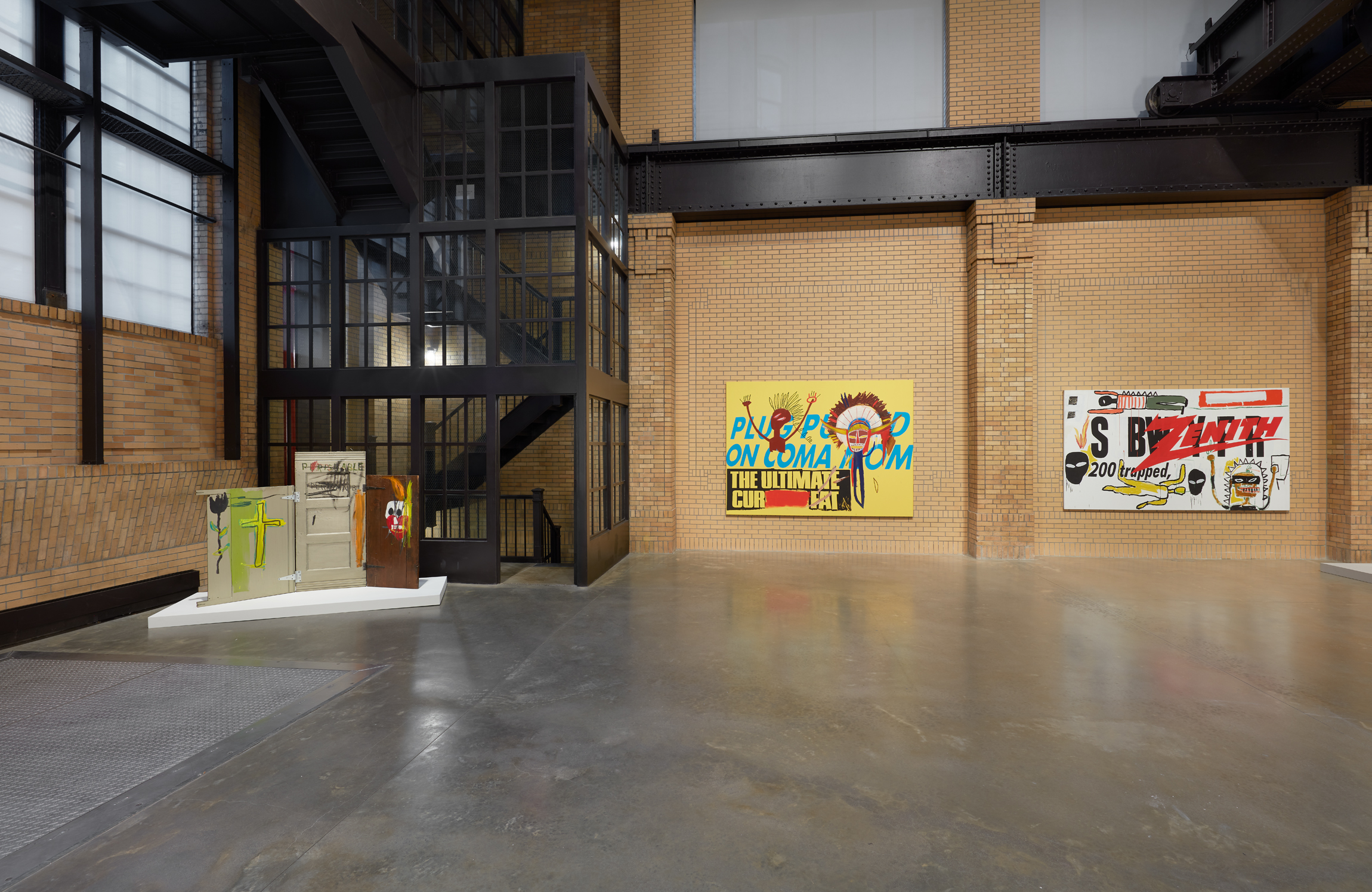Past Exhibition
Basquiat x Warhol
New York November 1st to January 7th, 2024
The Brant Foundation is pleased to present Basquiat x Warhol, an exhibition of works from the artists’ influential collaboration in the early eighties. Curated by Dr. Dieter Buchhart and Peter M. Brant in collaboration with Dr. Anna Karina Hofbauer, this is the first time this iconic collaboration has been the subject of a major New York exhibition in over twenty-five years.
Basquiat and Warhol occupied two distinct spaces in New York’s 1980s art scene. After their formal introduction in 1982 at Warhol’s Factory, the two would meet regularly, working on multiple monumental canvases at once, resulting in over 160 collaborative works created in the short period of from late 1983 to 1985. This enthusiastic exchange of energy is exemplified in their paintings, which illustrate a back and forth that is both tense and complimentary. The paintings are rife with both artists’ unique iconographies: Warhol’s screen-printed advertisements and cultural symbols are effaced by Basquiat’s iconic figures and signs; newspaper headlines included by Warhol are obscured and rewritten by Basquiat; scenes painted in Basquiat’s conceptual Neo-Expressionist style are joined by Warhol’s precise appropriations of brand logos. The artists also influenced each other: Warhol at times returned to his painterly beginnings, and Basquiat increased his use of the silkscreen-printing technique.
“In their collaboration, Jean-Michel Basquiat and Andy Warhol came together and opened new ideas and spaces of thought that mirror both our present time as well as the past and future. The results are brilliant artworks that continue to have an impact in our own time as they appear to address pressing and highly relevant contemporary topics such as racism and consumerism. Their collaboration was a unique project and probably one of the greatest and most enduring in all of art history,” says Dr. Buchhart.
Peter M. Brant would like to extend a special thank you to Tony Shafrazi, not only for his advice and support of this exhibition, but also in recognition of his pivotal role in bringing these two artists together, most notably in his 1985 exhibition at Tony Shafrazi Gallery.
This exhibition is an initiative of the Fondation Louis Vuitton, Paris and has benefited from the collaboration between the Fondation Louis Vuitton and The Brant Foundation.
The Brant Foundation extends its gratitude towards its Lead Exhibition Partner, American Express Platinum. Art is a passion point for American Express Platinum Card® Members, and through the company’s By Invitation Only® program they will have access to an exclusive two-day ticket pre-sale starting September 22, 2023, Platinum-only time slots for the entire run and special VIP access, including the exhibition opening, a private tour, and curator-led panel. To learn more click here.
Thank you to our Shipping Partner Crozier.

VIRTUAL TOUR
Virtual Tour by: Tom Powel Imaging
Basquiat x Warhol Collaborations
The collaborations showcase both artists’ unique and distinguished practices. Warhol’s screen-printed logos and news headlines are presented alongside Basquiat’s iconic figures and symbols. The two were inspired and energized by one another, often showcasing this dynamic relationship within their paintings.
Throughout this exhibition, various groups of collaborations can be distinguished: first, Warhol’s hand-painted logos like Arm & Hammer, the Olympic rings, or Paramount; second, simple motifs of Warhol’s — like dogs, household appliances, or fruits — as basic themes; third Warhol’s more complex visual creations, such as a landscape to which Basquiat reacted; fourth, those paintings with headlines provided by Warhol; fifth, works whose foundation motifs took the form of silkscreens; and the sixth and last group of collaborative works, joint works initiated by Warhol in a copy and paste style of the highest complexity.
Buchhart, Dr. Dieter, “Excerpts from Dr. Dieter Buchhart,” In Basquiat X Warhol: Painting Four Hands, (Paris, France: Fondation Louis Vuitton, 2023).
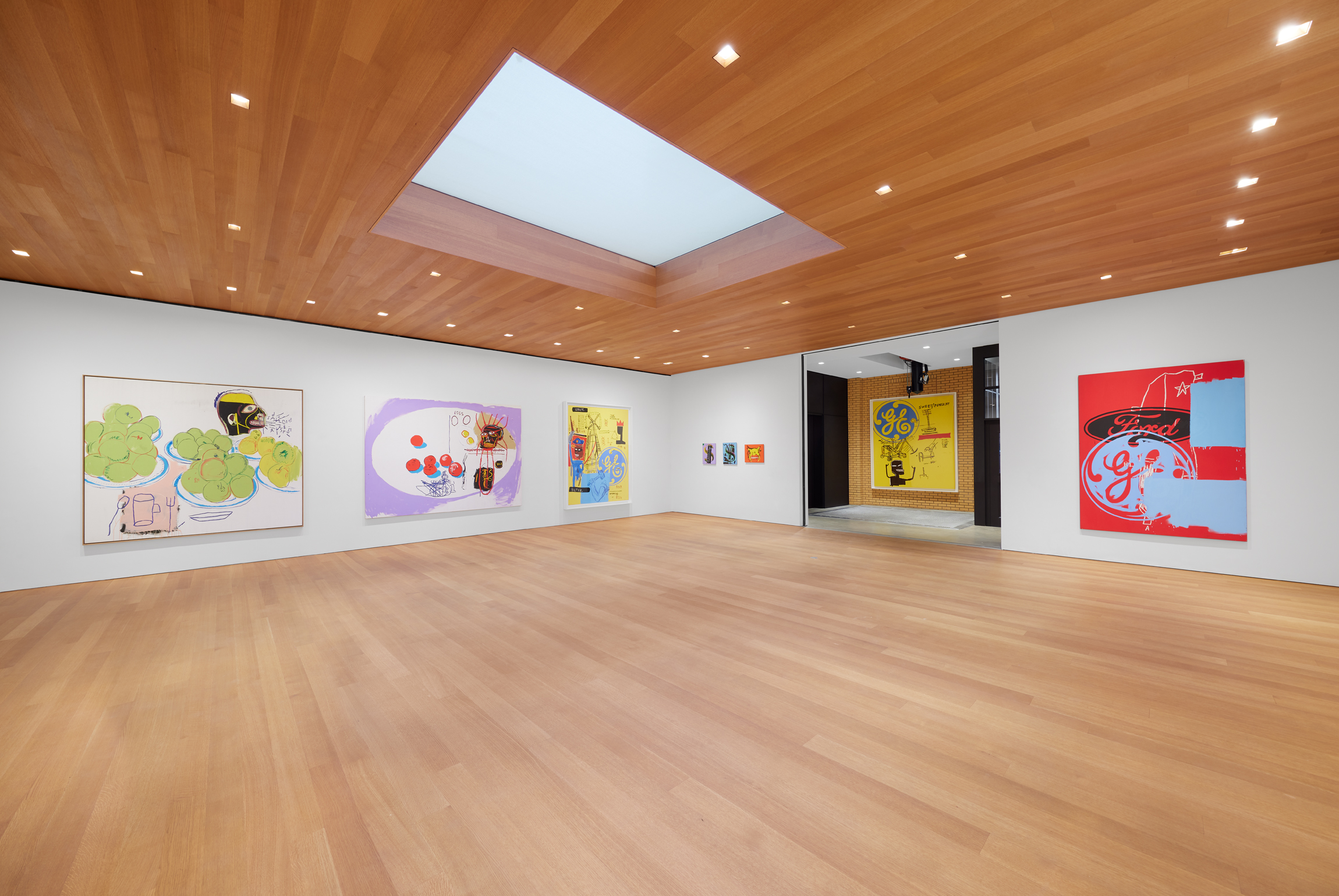
Jean-Michel Basquiat, Francesco Clemente, Andy Warhol
When Basquiat, Warhol, and Clemente began their joint works, three very different artists encountered one another with profiles, interests, and themes that were already quite clearly defined. Each of the artists began with four paintings and a drawing that were then delivered to one of the other two artists. Similar to Basquiat’s modifications of Warhol’s small silkscreen paintings, each of the three reacted to what had already been drawn, painted, or silkscreened by the other, modifying whatever was there.
The fifteen joint works by Basquiat, Clemente, and Warhol demonstrate that each of the three artists sensitively responded to the prior contributions of the others and respected what was there, while modifying, painting over, and or blotting out.
Clemente’s approach to Warhol’s ground can be read in In Bianco. Rather cautiously, he added faces. Basquiat then drew over the red face next to the central axis with white oil stick to make it a grinning grimace with gray hair. Basquiat left Warhol’s silkscreen of people strolling down a beach and Clemente’s faces when he covered a large portion of the canvas with dark blue paint, writing “WATER” in the upper right and spreading a black grid across the left half of the painting. He took up Warhol’s beach and sea motifs in the intense blue paint, the word “water” and by leaving behind a strip of sand.
Buchhart, Dr. Dieter, “Excerpts from Dr. Dieter Buchhart,” In Basquiat X Warhol: Painting Four Hands, (Paris, France: Fondation Louis Vuitton, 2023).
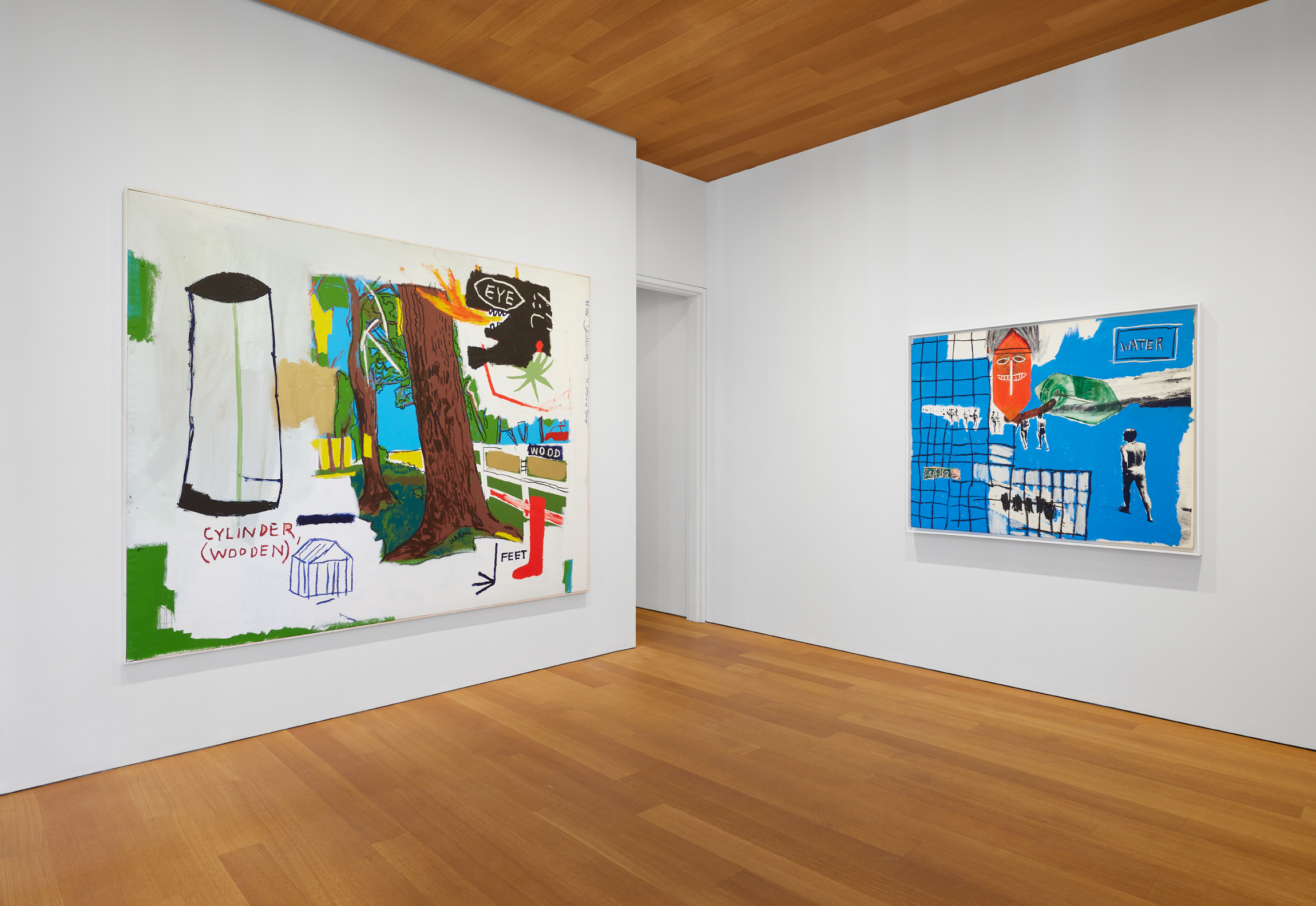
New York’s art world in the 1970s and 1980s
Artistic practice in various artistic disciplines – such as painting, performance, music, and film – was ubiquitous in the New York art scene of downtown Manhattan in the late 1970s and early 1980s, and collective artistic work was common among younger artists. Warhol’s openness to diverse media since the 1960s was certainly an important model for this; he had worked in a range of artistic media, and over the years, constantly expanded his repertoire. It stretched from painting, printmaking, drawing, photography, and sculpture all the way to film, fashion, television, performance, theater, music, literature, and digital art. Warhol thus transcended the traditional borders between individual disciplines and cultural scenes.
In subsequent years, artists began practicing diverse métiers. Basquiat worked as a painter, draftsman, performer, actor, musician, poet, and DJ, while Keith Haring performed art in public spaces, produced paintings, drawings, and prints, and worked with video, photography and as a DJ. Julian Schnabel is today known for his pictorial work and as a filmmaker, as well as an interior designer.
For Francesco Clemente, collective works were part of his artistic practice: “To work with an artist is a way to understand him. It seemed quite natural, since I had been collaborating with craftspeople in India, doing the miniatures and books and so on, to collaborate with another artist.” With this structural openness, collective artistic work was an almost self-evident undertaking.
Buchhart, Dr. Dieter, “Excerpts from Dr. Dieter Buchhart,” In Basquiat X Warhol: Painting Four Hands, (Paris, France: Fondation Louis Vuitton, 2023).
